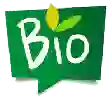
Château Tertres du PlantouBergerac Rose
This wine generally goes well with
The Bergerac Rose of the Château Tertres du Plantou is in the top 0 of wines of Bergerac Rosé.
Details and technical informations about Château Tertres du Plantou's Bergerac Rose.
Discover the grape variety: Putzcheere
It is believed to have originated in Hungary, in the region bordering Romania, from where it spread to Germany, Alsace and the southwest of France, particularly in the Gers and high Pyrenees departments. It is also found in the United States (California). Today, it is almost absent from French vineyards. - Synonyms: putchir, putscher, butschera (for all the synonyms of the grape varieties, click here!)
Informations about the Château Tertres du Plantou
The Château Tertres du Plantou is one of of the world's greatest estates. It offers 4 wines for sale in the of Bergerac Rosé to come and discover on site or to buy online.
The wine region of Bergerac Rosé
The wine region of Bergerac Rosé is located in the region of Bergerac of South West of France. Wineries and vineyards like the Château de la Jaubertie or the Château Haut Sarthes produce mainly wines pink, red and white. The most planted grape varieties in the region of Bergerac Rosé are Merlot, Cabernet-Sauvignon and Cabernet franc, they are then used in wines in blends or as a single variety. On the nose of Bergerac Rosé often reveals types of flavors of raspberry, tropical or vegetal and sometimes also flavors of tropical fruit, black fruit or oak.
The wine region of South West
The South-West is a large territorial area of France, comprising the administrative regions of Aquitaine, Limousin and Midi-Pyrénées. However, as far as the French wine area is concerned, the South-West region is a little less clear-cut, as it excludes Bordeaux - a wine region so productive that it is de facto an area in its own right. The wines of the South West have a Long and eventful history. The local rivers play a key role, as they were the main trade routes to bring wines from traditional regions such as Cahors, Bergerac, Buzet and Gaillac to their markets.
The word of the wine: Vatting
After five to eight days of alcoholic fermentation, it is possible to prolong the maceration in order to extract the maximum amount of matter from the marc. The wines obtained in this way are rich and full-bodied, and in principle are intended for laying down.







